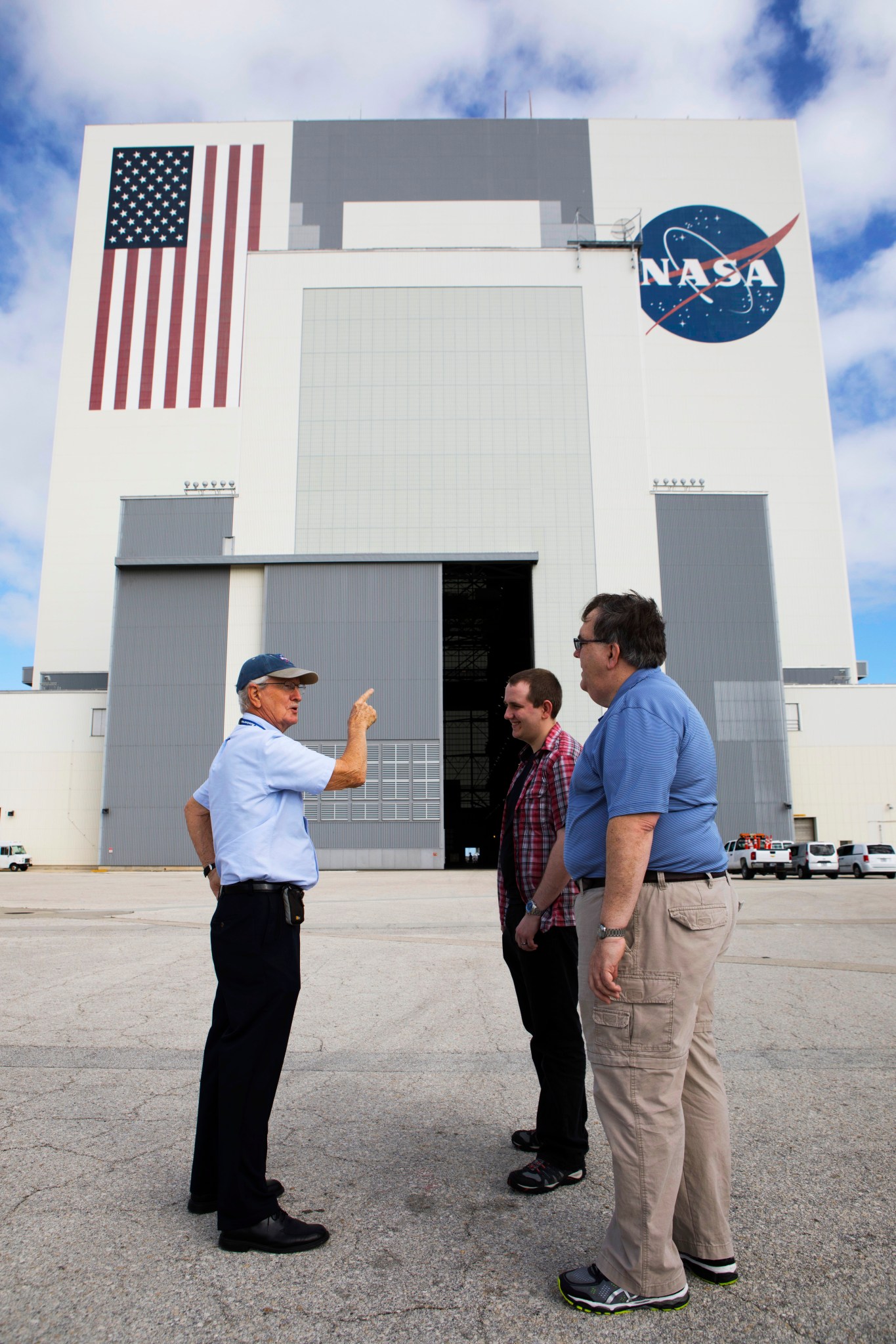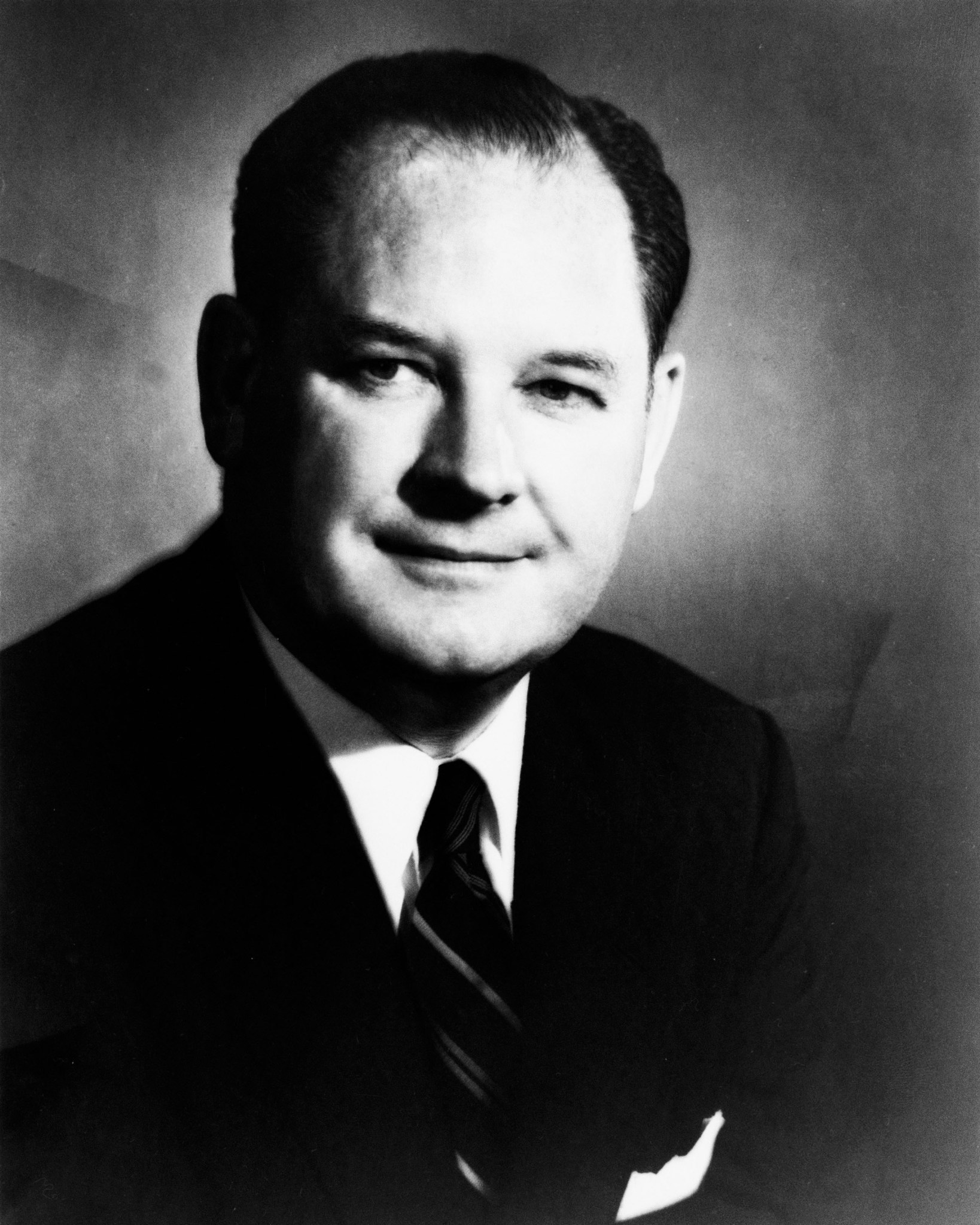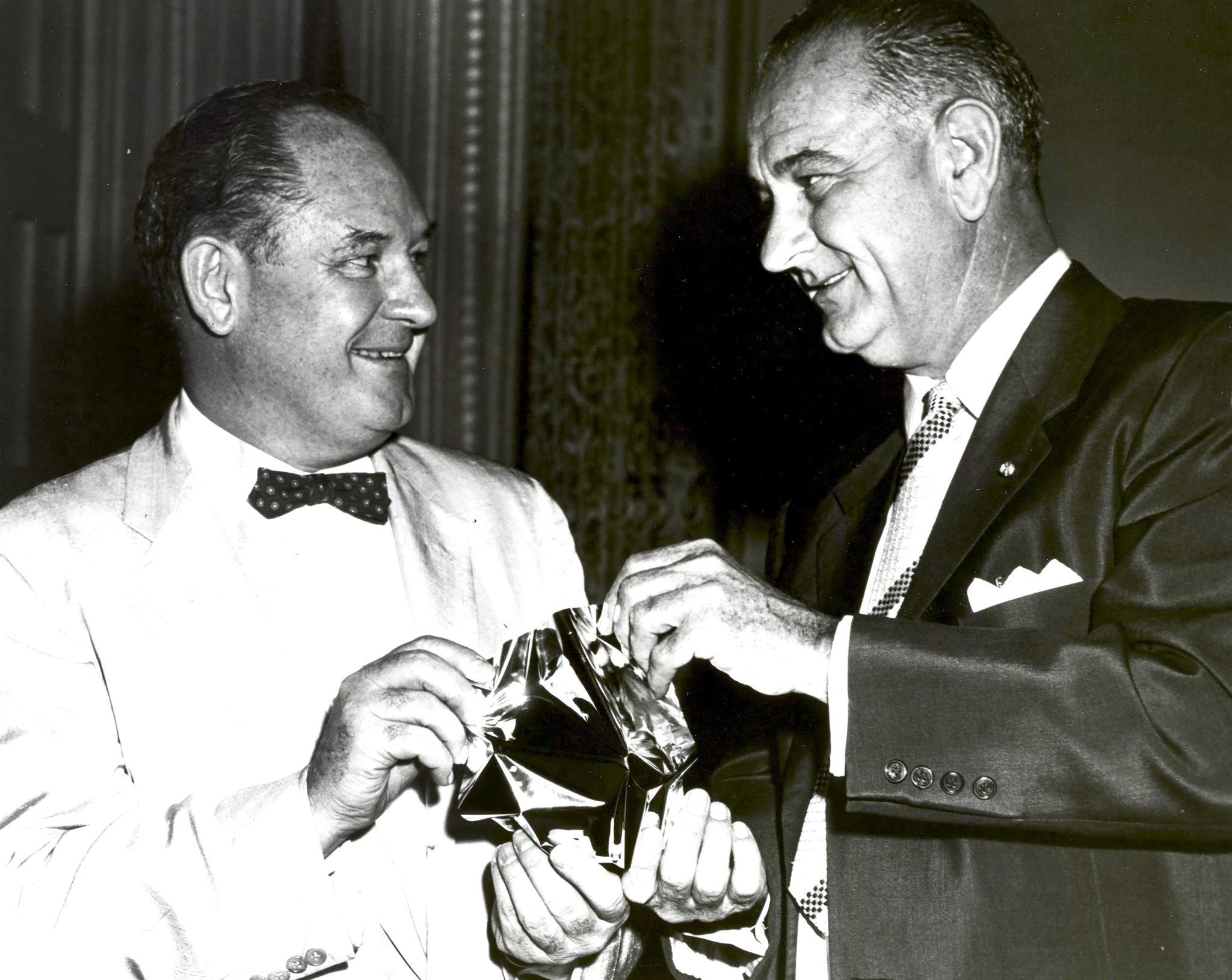By Bob Granath
NASA’s Kennedy Space Center, Florida
NASA’s Kennedy Space Center in Florida frequently hosts visitors wanting to see the nation’s premier, multi-user spaceport. Recent guests were family members of the agency’s first administrator — T. Keith Glennan.
Visiting from Baltimore were Keith Glennan III, an information technology consultant, and Andrew Glennan, a software engineer. They are the grandson and great grandson, respectively, of President Dwight Eisenhower’s appointee to lead NASA when the agency was established in October 1958.
Keith Glennan III, who spent most of his career in the aerospace industry, expressed pride in the agency’s successes over almost six decades since NASA was formed.
“Obviously, the Apollo Program was an amazing accomplishment,” he said. “The Shuttle Program and everything that came from it pushed the boundaries of technology.”
Both guests also were impressed by the immensity of the facilities that have been the site where many of NASA’s historic missions were launched.
“Here at Kennedy, you quickly get a sense of the scale of everything,” Keith Glennan III said inside the Vehicle Assembly Building (VAB). “It’s just incredible.”
Originally built to house assembly of the Apollo/Saturn V rockets, the VAB is 525 feet high and covers eight acres. After supporting the Space Shuttle Program for more than 30 years, 10 levels of new work platforms have been installed to provide access during processing of NASA’s Space Launch System (SLS) rocket and the Orion spacecraft to take crews beyond low-Earth orbit including to the moon and Mars.
Both Keith and Andrew Glennan are proud of what NASA has accomplished, but also are impressed by where the agency is going.
“It’s exciting to see the renewed energy here around SLS and space commercial applications,” he said,
Commercial providers not only are launching resupply missions to the International Space Station, they soon will take astronauts to and from the orbiting laboratory. Through NASA’s Commercial Crew Program, the agency has partnered with Boeing and SpaceX to facilitate development of a U.S. commercial crew space transportation capability achieving reliable and cost-effective access to low-Earth orbit and the space station.
When NASA was formed at the beginning of the Space Age, the agency’s first administrator presided over an organization that had absorbed the earlier National Advisory Committee for Aeronautics and three major research laboratories — the Langley Aeronautical Laboratory in Virginia, the Ames Aeronautical Laboratory in California and the Lewis Flight Propulsion Laboratory in Ohio.
Administrator Glennan soon brought in part of the Naval Research Laboratory forming the Goddard Space Flight Center in Maryland. In December 1958, NASA acquired the Jet Propulsion Laboratory at the California Institute of Technology in California. In 1960, the Army Ballistic Missile Agency in Alabama transferred to NASA, becoming the Marshall Space Flight Center.
During his tenure leading NASA, Glennan oversaw the formation of the nation’s first human spaceflight program, Project Mercury, and selection of the Original Seven astronauts. Prior to his departure in January 1961, the agency also launched the first weather and communications satellites and the first probe to the moon.
Both Keith and Andrew Glennan were grateful for the chance to see first-hand the progress made in almost 60 years since NASA was established.
“We really appreciate the opportunity to be shown around,” Keith Glennan said. “We’re excited to see the energy here at Kennedy.”


























